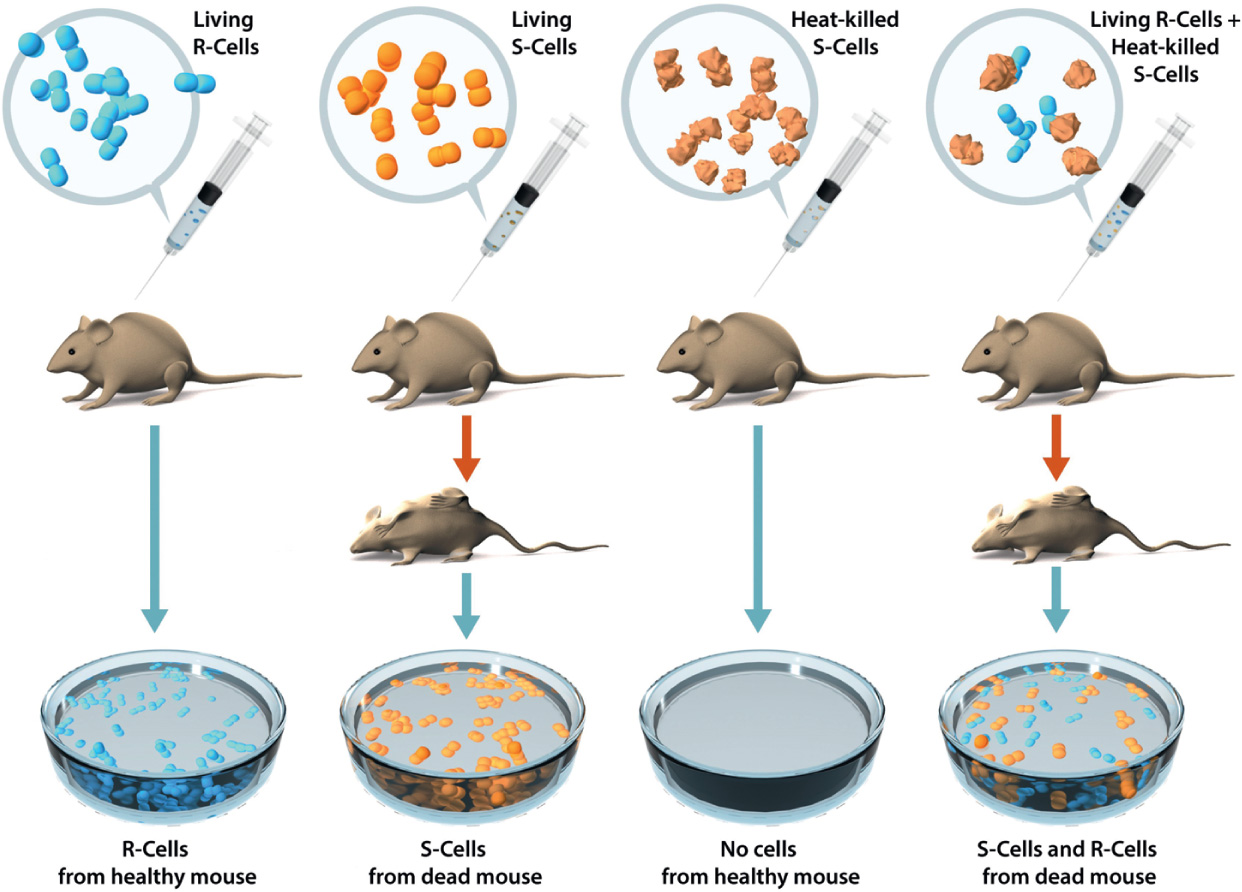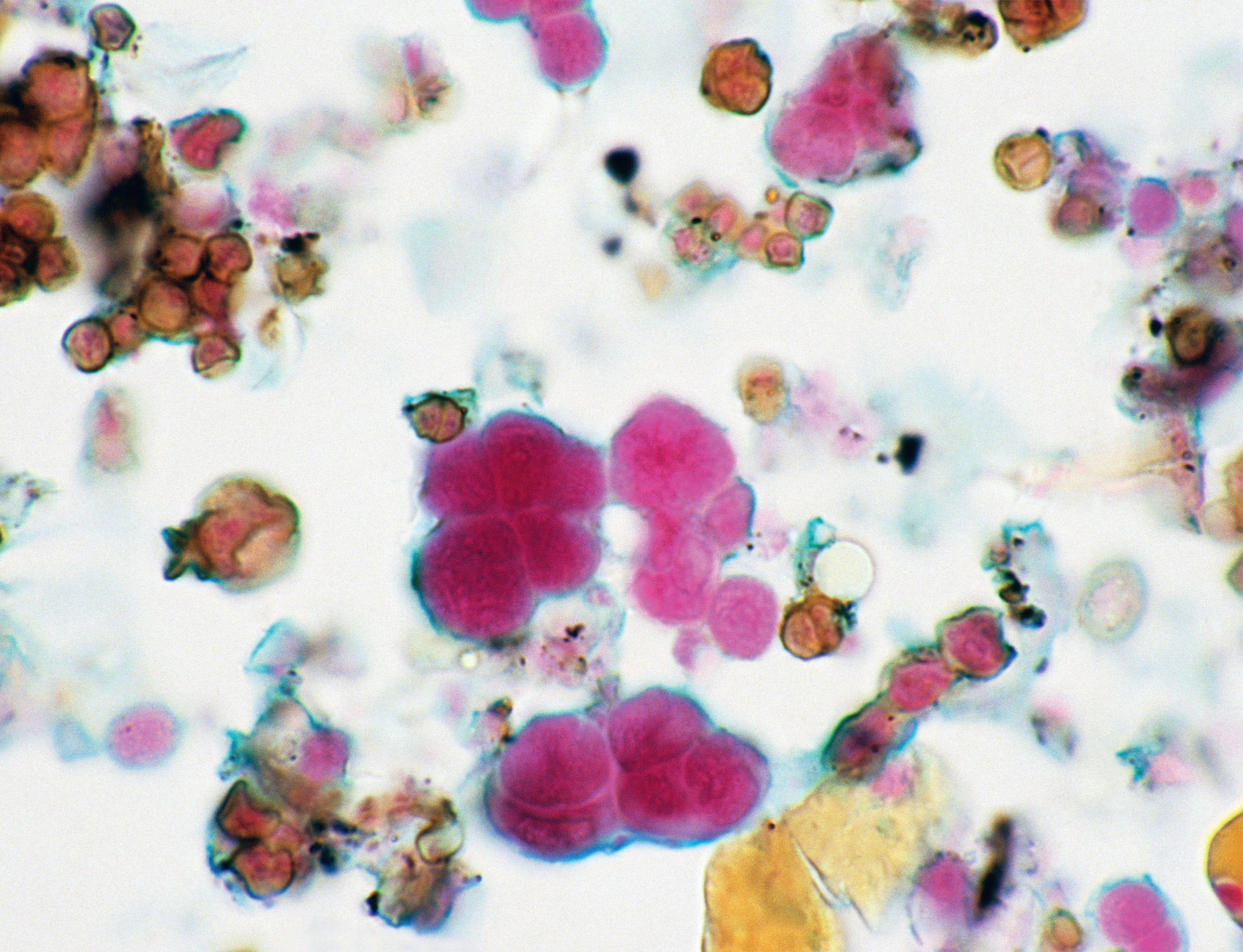
Influenza medical advice poster, Washington DC, USA, 1918. The 1918 Spanish flu pandemic infected one fifth of the world’s population and killed around 50 million people.
The experimental line that would lead to an understanding of heredity and genetics started with Gregor Mendel’s work with peas (see here) and continued with Thomas Hunt Morgan’s studies of fruit flies (see here). The next development, taken in 1928 by Frederick Griffith, a medical officer working for the UK Ministry of Health in London, brought biologists a step closer to the key molecules involved. Mendel’s peas produced only one generation a year, limiting his opportunity to study heredity. Morgan’s fruit flies reproduced every couple of weeks. But bacteriologists can see changes that take place in a matter of hours. Griffith was interested in bacteria as agents of disease, rather than as a tool for research into genetics. But that did not stop him making a discovery that turned out to be crucial in the study of genetics.
Following the global influenza epidemic of 1918–1920, which killed at least 50 million people (more than the combined battlefield casualties of the First World War), governments around the world stepped up their research into the causes and cures of infectious diseases. During the 1920s, Griffith had been investigating the possibility of developing a vaccine against pneumonia. He was working with two strains of pneumococcus bacteria, and studying how they affected mice. In one strain the bacteria are covered in a smooth coating (a polysaccharide), which makes cultures of the strain look shiny. As a result this strain is prosaically called ‘smooth’ (S). The other strain used by Griffith has a rough surface, and is called ‘rough’ (R). Cultures of this strain have a lumpy appearance. (There is also a third strain of pneumonia-causing bacteria – pneumococci – but these were not used in his experiments.) Before Griffith’s work, bacteriologists thought that each of the three strains of pneumococci were completely independent of each other, each fixed with its own properties down the generations. But Griffith knew that different stains of pneumococci, some lethal and some not, could be present at the same time in the body of a person (or mouse) with pneumonia, and considered the possibility that instead of different varieties being present from the beginning, one kind might change into another.

When mice (or, indeed, people) are infected with the rough strain of pneumococci, the invaders are easily recognized by the body’s immune system, which kills them off before any serious harm is done. But the covering on the smooth strain seems to disguise them from the immune system, with the result that they can proliferate and cause serious illness, even death. In a series of experiments, Griffith showed that mice injected with the rough strain of pneumococci lived, mice injected with the smooth strain died, and that mice injected with bacteria from the smooth strain that had been killed by heating also lived. But then came the bombshell that he reported in January 1928.

When Griffith mixed heat-treated smooth bacteria with live rough bacteria and injected them into mice, the mice died. On their own, neither of the two forms in the mixture was a killer, but together they were lethal. Samples taken from the dead mice showed that they were teeming with live smooth pneumococci. Somehow, the live rough bacteria had been ‘transformed’, in Griffith’s word, into live smooth bacteria. The explanation he proposed was that what we would now call genetic material from the dead smooth bacteria had been passed into the living rough bacteria, enabling them to ‘learn’ how to develop a smooth coating. Further experiments confirmed that this must be the case, and Griffith called the substance involved the ‘transforming factor’. Once they had been transformed in this way, when they were transferred to a dish in the laboratory and monitored closely, the ‘new’ smooth bacteria were seen to breed true, replicating to produce a colony of smooth bacteria. As Griffith wrote in the scientific paper announcing the discovery, ‘The R form … has been transformed into the S form’. He realized that the transforming factor must be a chemical substance that was not affected by the heat treatment. But he did not know which molecules were involved in the genetic transfer. That only became clear after 1944 (see here), as a result of new experiments directly inspired by Griffith’s observations. But he did not live to see these developments; he was killed in an air raid during the London Blitz of 1941.
